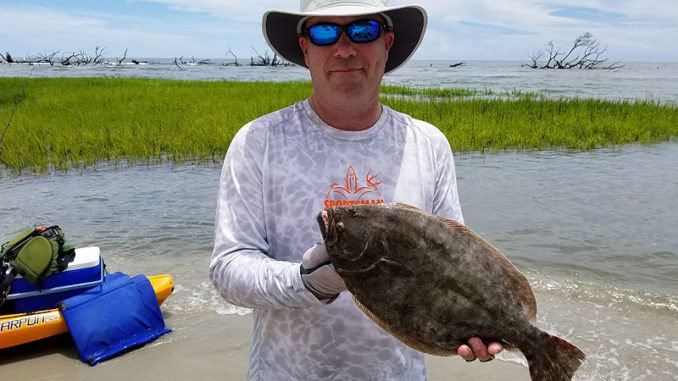
Keeping up with rising or falling water can keep anglers on fish
Anglers understand that tide plays a major factor in fishing, but many don’t understand it as well as others.
Some anglers say low tide is best; others believe in high tide. Either can be true on any given day. But the bite is usually best when the tide is moving, not while it is at its absolute peak in either direction.
Some anglers look at a tide chart and decide they want to be in a specific spot once the tide starts moving. So they get there early, anchor down, then wait for the tide to move. And once it’s moving, they fish until it stops, then call it a day.
Move with the tide
But a better plan is to move and fish with the tide shift. As the water rolls into or out of a creek, it either opens up areas for fish that haven’t been accessible for several hours, or it forces them to leave those areas. Redfish, speckled trout and flounder will all visit those newly accessible areas, looking for small crustaceans and baitfish that are seeking shelter. Or they leave the same areas if the tide is falling and seek deeper holes nearby. This will keep them safely underwater and puts them in ambush spots as their prey also moves with the tide.
As the tide comes in, fish don’t pick one spot to visit, then wait for the tide to complete its cycle. Instead, they move into a newly accessible area, eat what they can, and then move into the next accessible area. And as the tide goes out, they leave spots that will soon be dry and find ambush points in slightly deeper holes. Then, they move to the next ambush spot that is most favorable. They continue to move as the tide does, and anglers should, too.
Don’t sit still — the tide doesn’t
If you’re anchored in one spot throughout the tide cycle and waiting for the fish, you’re missing out on a lot of opportunities.
Staying on the move, or at least moving frequently, are both better options. When a tide chart says high tide will arrive in Old Man Kelsey’s Creek at 3:11 p.m., anglers must realize that entire creek will not instantaneously become flooded. Depending on the size of the creek, it could take five minutes — or an hour — for the high tide to reach a specific spot.
So, rather than anchoring in that one spot, anglers can go with the flow. In whatever inlet or creek you’re fishing, the point or landmark that is closest to the open ocean is usually where the tide charts are measured. On a rising tide, that’s the area new water will come in first. On a falling tide, it’s the area that is usually affected last. So those can be good starting or stopping points — but not anchor-and-stay points.
Fish good spots
The areas where new tides will be most noticeable to anglers and fish are the narrowest portions of a creek or inlet and the edges where water will either fall out of or move into. It makes sense to concentrate on those areas.
When the tide is rising, fish move into areas that are just filling with water. But they won’t stay there. They’ll move to the next accessible area as the creek continues to flood. As the tide drops, fish move out of areas that are about to go high and dry. And they move again as the tide gets even lower. And as the tide continues to move, anglers who move with it will continue to target fish that are swimming into those areas.
If a creek has 17 oyster rakes that are exposed at low tide, anglers who move as the tide comes in can fish all 17 of them. They can fish them as soon as the water level makes them accessible to the fish. But anglers anchored in one spot throughout the tide can only fish the oysters that are within casting distance from their location. They will catch some fish, but they will miss the chance to catch even more.
Remember that on a rising tide, fish are moving into areas that the new tide is making accessible. And on the falling tide, fish are moving to spots that will keep them underwater and provide ambush spots. Their overall goal is to eat; be there to feed them.
______________


